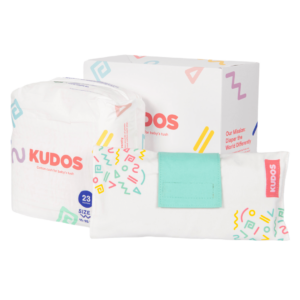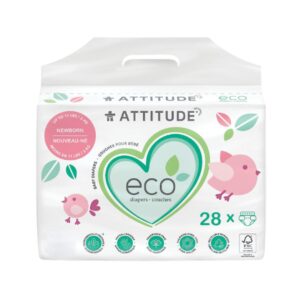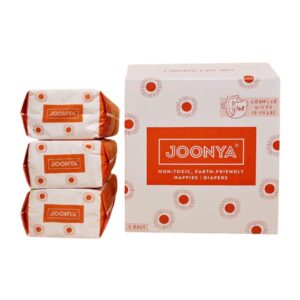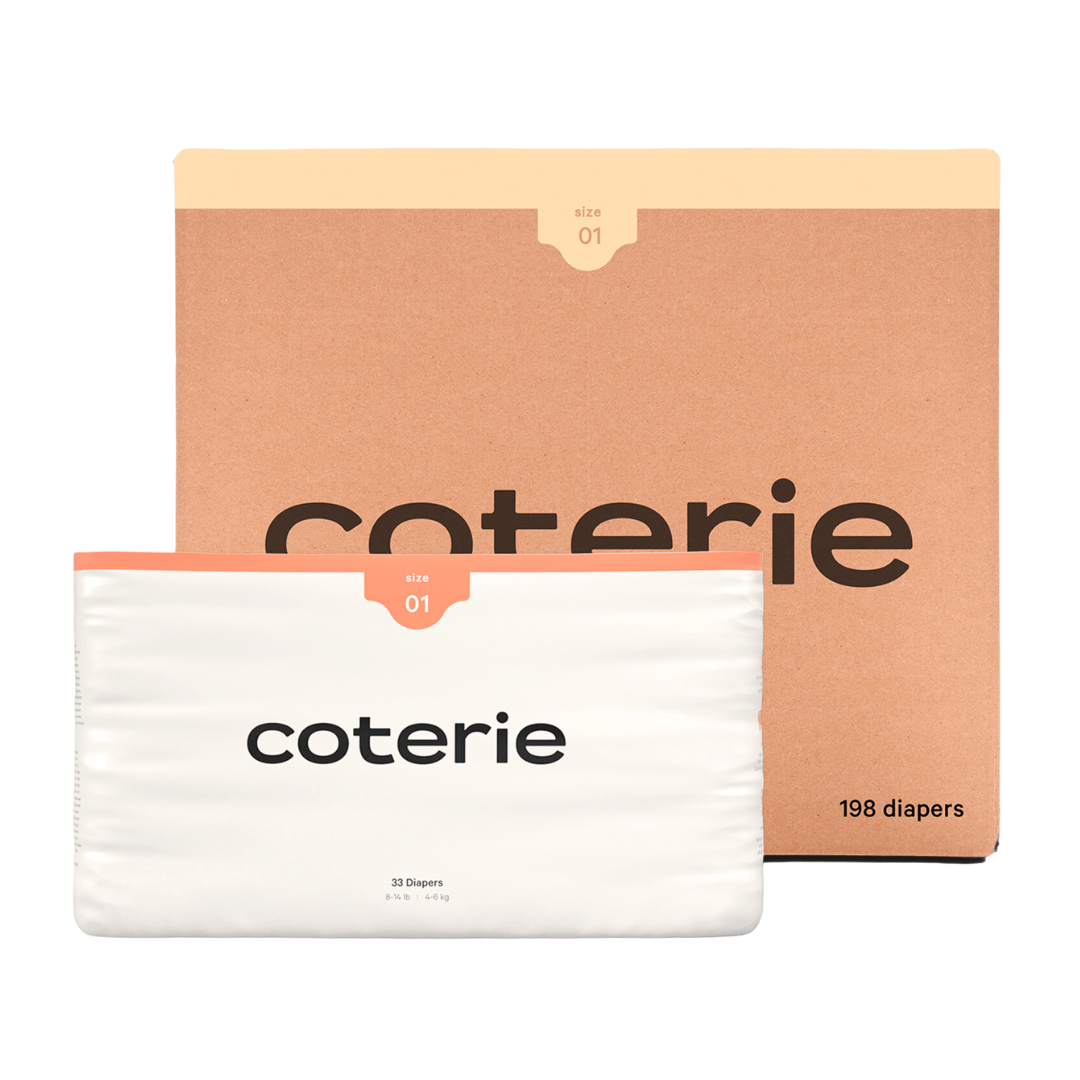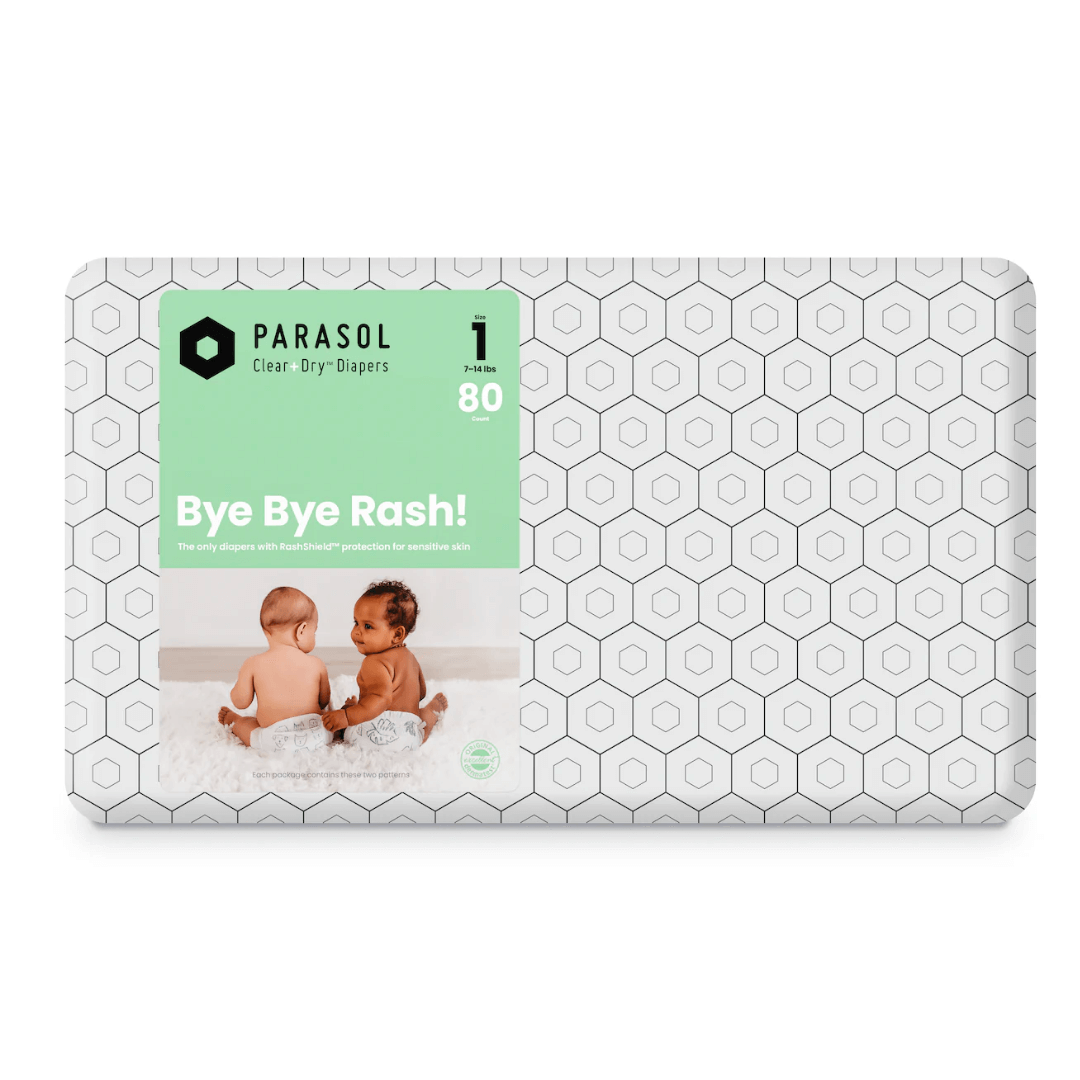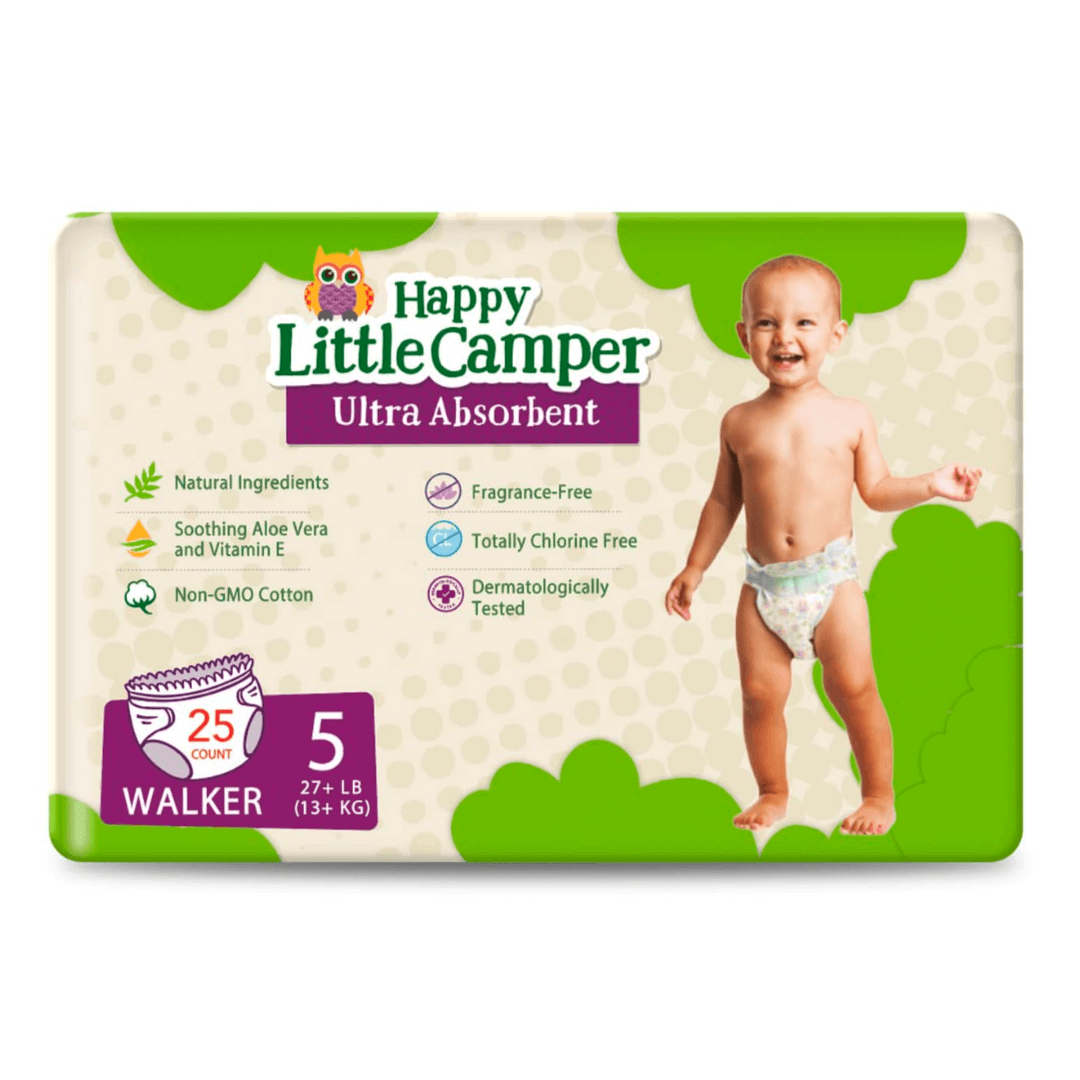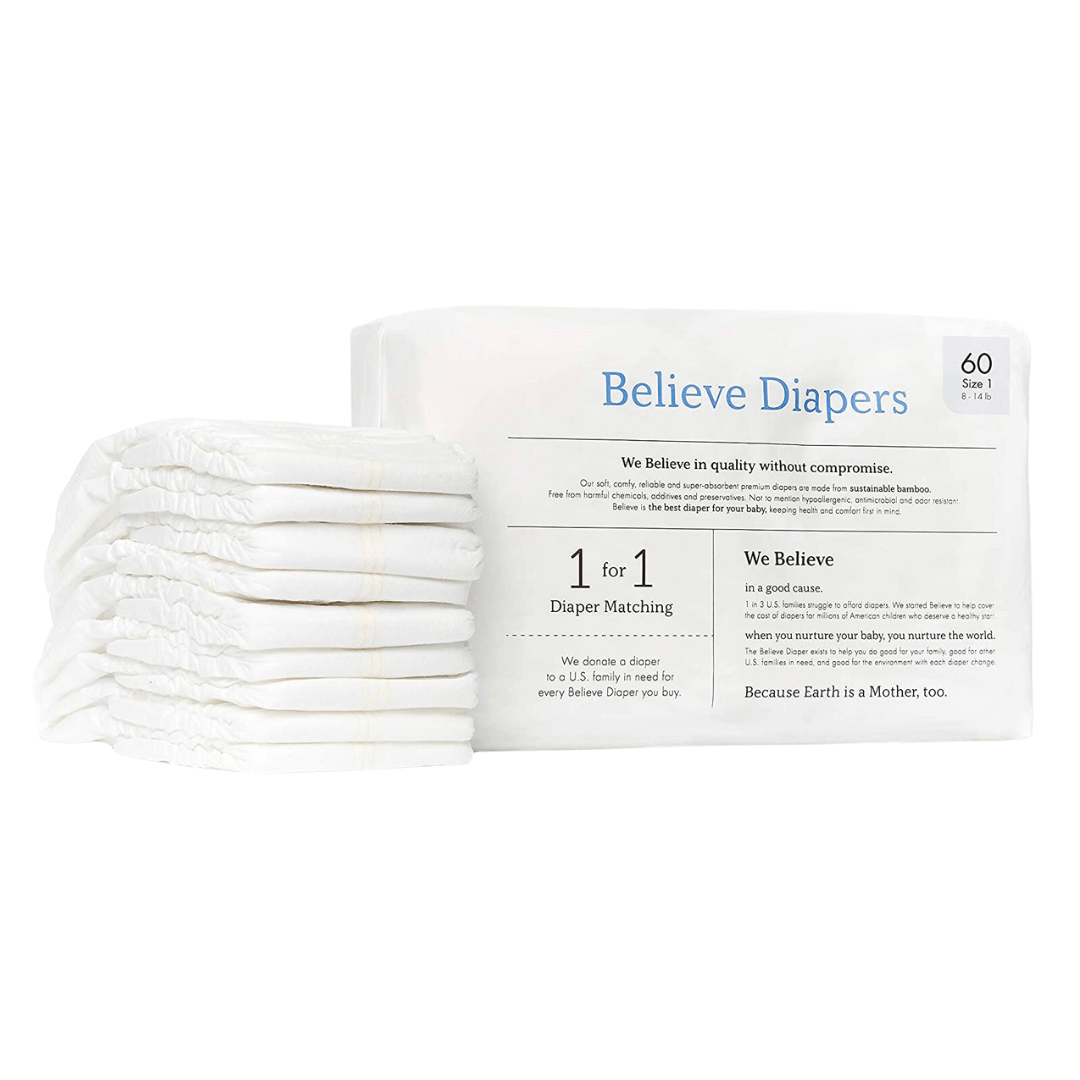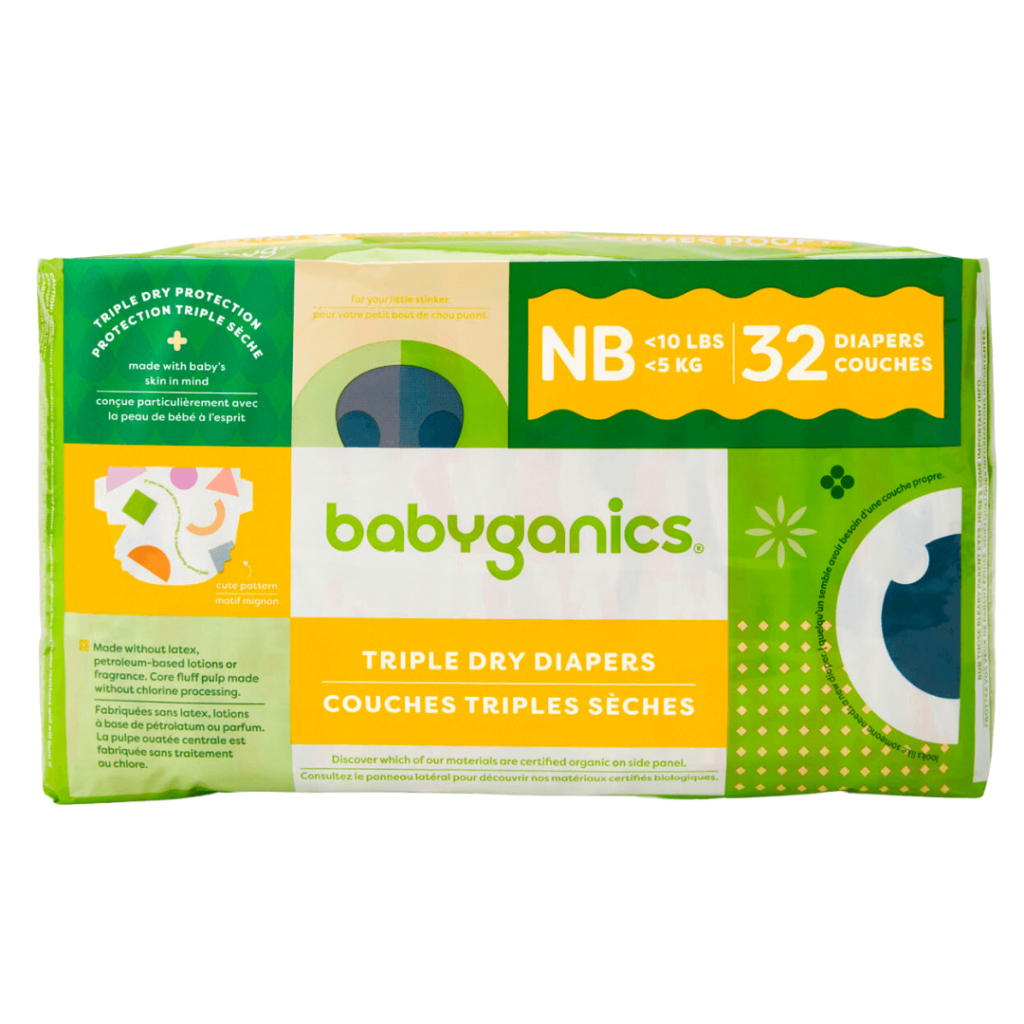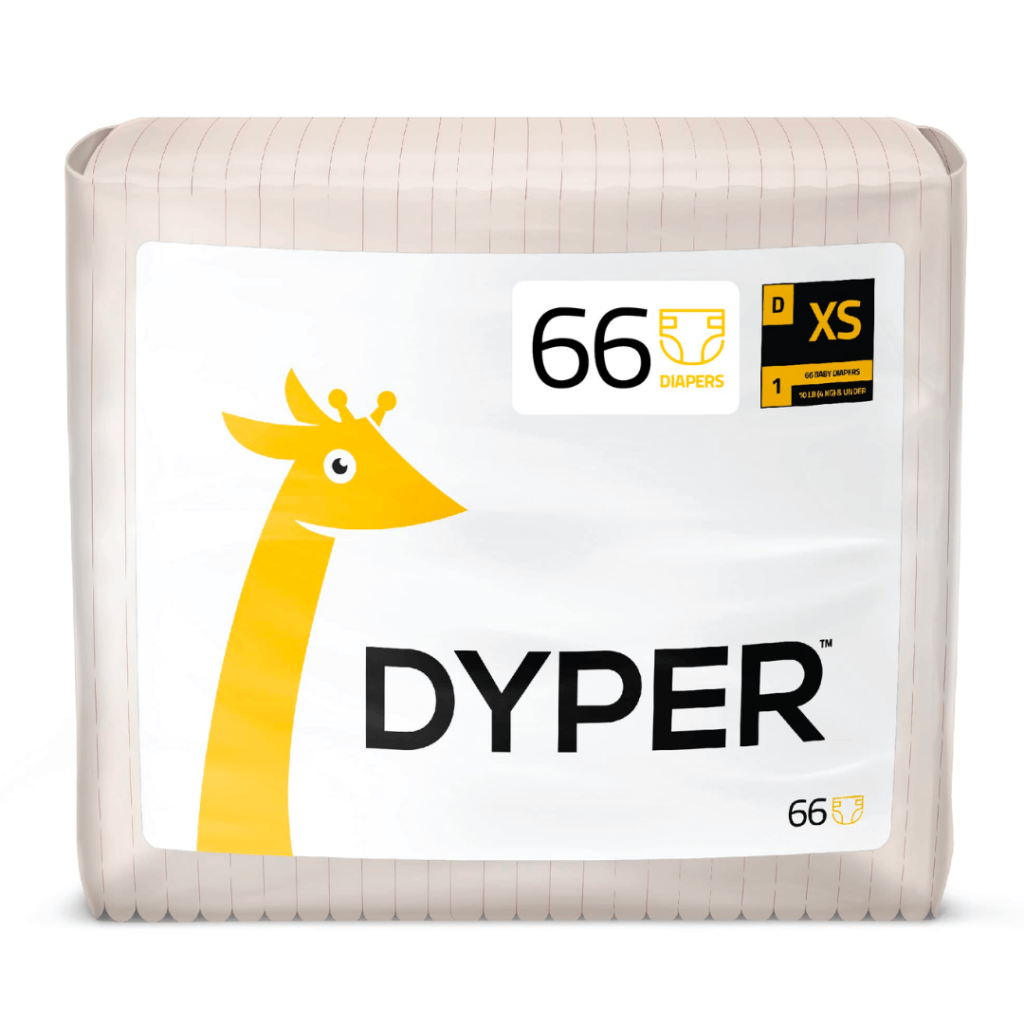Did you know that there are toxic chemicals and questionable materials in baby diapers? Well, buckle up, because we’re about to dive into the wonderful world of non-toxic organic diapers! Gone are the days of worrying about mysterious chemicals against your baby’s delicate derriere. In this article, we’ll explore the top-notch benefits of these eco-friendly, healthier, baby-friendly options. What are the best organic diaper brands? What should you avoid?
Keep reading to learn more about non-toxic organic diaper options! Let’s dive in!
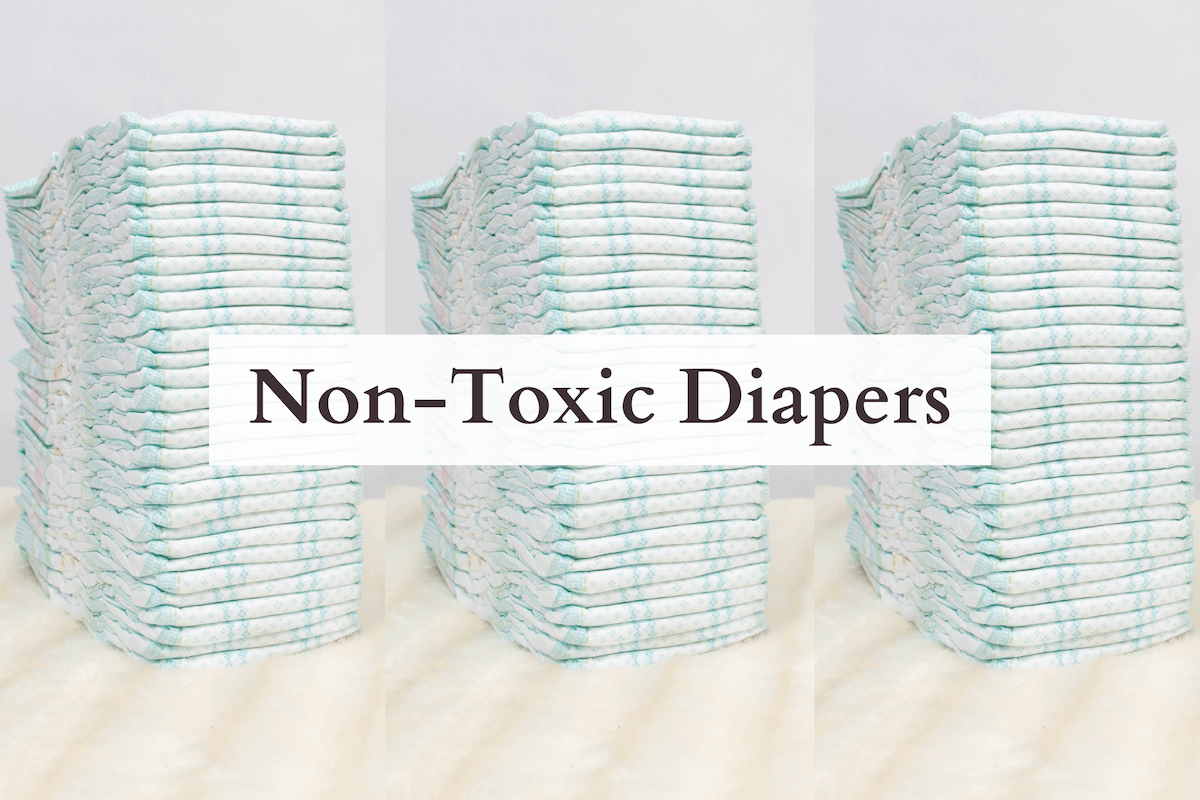
Note: This article contains affiliate links, meaning In On Around will make a small commission at no additional cost to you. This helps me maintain the site. As always, I value full transparency & only work with brands I love and trust.
What Is A Diaper Made Of?
When it comes to the care and comfort of our little ones, understanding the materials that make up a diaper is crucial. Let’s dive into the fascinating world of diaper construction and explore the key components that contribute to its absorbency, softness, and overall functionality.
- Top Sheet
- Comes in contact with your baby’s reproductive organs. This is usually made of materials like polypropylene.
- Diversion Layer
- Draws moisture (urine) towards the core that’s usually made from cellulose or polyester.
- Core Absorbent Layer
- This is usually a mixture of wood pulp, fluff, plus a super absorbent polymer (SAP)
- SAP becomes gelatinous upon contact with moisture. It’s commonly made from sodium polyacrylate.
- The wood pulp can be bleached with chlorine to make it white and “improve” the absorbency.
- Fastening Strip or “Diaper Tabs”
- This closing tape is mostly made from polypropylene film and adhesive [1]
- Outer Layer or “Back Sheet”
- This is typically made from polyethylene or polypropylene plastic to create a waterproof barrier
- Elastics are also attached to the back sheet for the leg cuff area.
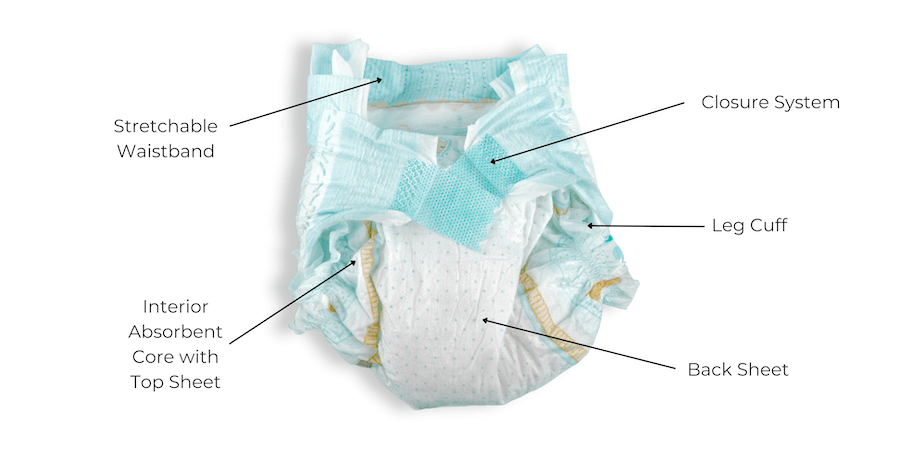
Understanding The Dangers Of Conventional Diapers
In the realm of baby care, it’s crucial to shed light on the potential hazards posed by conventional diapers. There are potential dangers associated with conventional diapers and they can contain harmful chemicals and irritants. Considering the high rate of chemical absorption in the genital area and the limited detoxification abilities of infants and young children, this information is crucial. Moreover, it’s important to highlight the significance of environmentally friendly and sustainable options.
These diapers are on the baby’s body 24 hours a day, 7 days a week, 365 days a year! The materials their diapers are made of can certainly impact their wellbeing, especially since newborn skin is so thin and fragile.
Conventional diapers can contain ingredients like:
- Phthalates
- These are common plasticizers that help give plastic its flexibility
- In diapers, they can be used to create a waterproof back sheet
- These chemicals have been linked to hormone disruption and potential developmental and reproductive issues in babies.
- Exposure to phthalates has also been associated with allergic reactions, respiratory problems, and adverse effects on the liver and kidneys.
- Toluene, Xylene, & Other Volatile Organic Compounds (VOCs)
- These are common solvents used in conventional diapers
- Toluene is potentially linked to developmental and neurological issues in babies, including impaired cognitive function and behavioral problems
- Xylene is associated with respiratory irritation, skin allergies, and potential damage to the nervous system
- These VOCs can contribute to indoor air pollution and have been linked to respiratory problems, allergies, and even potential neurological effects in infants.
- Heavy Metals
- Some conventional diapers may contain traces of heavy metals like lead, mercury, and cadmium, which can pose serious health risks.
- These metals have been linked to developmental delays, organ damage, and long-term cognitive impairments in infants and young children.
- Formaldehyde
- This is a known human carcinogen!
- Formaldehyde is a byproduct of manufacturing – it’s not added to the diapers on purpose
- Prolonged exposure to formaldehyde can lead to skin rashes, respiratory issues, and allergic reactions in babies, who are particularly vulnerable to its harmful effects.
Babies use about 6-8 disposable diapers every day for the first three years of their life. [2, 3]
- Undisclosed Wetness Indicator Chemicals
- Some diapers feature wetness indicators that change color when wet, but the specific chemicals used in these indicators are often undisclosed.
- These undisclosed chemicals may cause skin irritation or allergic reactions in babies with sensitive skin, making it challenging for parents to assess the potential risks associated with their use.
- Undisclosed Inks or Dyes
- Diapers may contain inks or dyes to create colorful patterns or designs, but the exact composition of these substances is often undisclosed.
- This lack of transparency raises concerns about potential skin irritation, chemical sensitivities, or allergic reactions.
- Dioxins from Chlorine Bleach
- This is a byproduct of the bleaching process.
- They can cause a long list of issues, like reproductive damage, immune system disruption, hormone disruption, cancer, and more. The EPA says dioxins are “likely human carcinogens” even in small amounts.
- Tributyltin (TBT) and other Organotins
- This a chemical often used as an antifungal agent in diaper production.
- It’s a known hormone disruptor that can interfere with the normal development and functioning of the endocrine system in babies. [4]
- Plastics/Microplastics
- These diapers can also break down into microplastics, which pollute our environment, water, and food supply.
- The environmental impact of disposable plastic diapers is a concern, contributing to plastic waste and pollution.
By the way – most of these contaminants and ingredients are NOT listed on the diaper packaging. This is why doing your due diligence is key. [5]
Want more information on ingredients to avoid?
TCF vs. ECF In Diapers
TCF (Totally Chlorine Free) and ECF (Elemental Chlorine Free) are two methods of bleaching used in the production of diapers.
TCF – TCF diapers are bleached without the use of any chlorine compounds, relying instead on alternative methods like oxygen, ozone, or hydrogen peroxide. This ensures that no chlorine or chlorine-derived substances, such as dioxins, are released during the bleaching process.
ECF – On the other hand, ECF diapers are bleached with chlorine dioxide, a less harmful chlorine compound that minimizes the formation of dioxins but still carries some environmental impact and potential exposure risk.
While both TCF and ECF diapers are considered safer alternatives to traditional chlorine-bleached diapers, TCF diapers offer a higher level of environmental and health benefits by eliminating chlorine entirely from the bleaching process. Opt for TCF when you can!
About 20 billion diapers (yes… with a “b”) are added to landfills in America each year. [6]
Do Organic Diaper Brands Even Exist?
Let’s clear something up.
Here’s the thing… unless you’re using a 100% organic cloth diaper, it is nearly impossible to find a 100% disposable organic diaper brand. Disposable diapers can contain some organic materials, but they won’t be 100% organic. Keep this in mind as you read through this article.
Choosing the Right Non-Toxic Organic Diapers
There are many, many, many “non-toxic” diapers options on the market. But the term “non-toxic” itself isn’t regulated, so you need to look into every single brand to know if it’s greenwashed.
1 – Transparency
Remember: test reports (like if there are heavy metals in the final product) are NOT confidential, proprietary, or a “trade secret.” Support companies that are fully transparent with their material quality. They should be proud of their products and happily share their results!
This is also important in other baby products, like formula. Learn more here: Safe, Non-Toxic Baby Formula Free Of Heavy Metals
2 – Harmful Bleaching Agents, Like Chlorine
Look for diapers that are totally chlorine-free (TCF-Free)! This means that chlorine was NOT used in the manufacturing process to bleach the diaper. Diapers are bleached to make them look “clean,” fluffy, and white.
3 – Fragrance or “Essence”
Even if it’s a “natural fragrance” – it’s completely unnecessary and can be a contact allergen.
If you want to learn more about fragrance, check out: Safe Fragrance 101 – What Is Natural Fragrance?
4 – Certifications
It’s great to see that some diaper brands go the extra mile and get certifications. Look for: OEKO-TEX Standard 100 (the best for non-toxic diaper materials), Children’s Product Certification (CPC), Consumer Product Safety Improvement Act (CPSIA), Forest Stewardship Council (FSC), Standard Global Services (SGS), Nordic Swan Ecolabel, and Asthma Allergy Nordic.
5 – Dye-Free, Lotion-Free
Dyes (which create designs on the outside of the diapers) and lotions are completely unnecessary. Some brands claim to use “natural” pigments that don’t contain heavy metals and are supposed to be hypoallergenic. It’s still not worth the additional chemical exposure risk.
Opt for plain, white diapers and add a separate organic cotton cover if you need to. If you must have a colorful/designed diaper, make sure you check with the manufacturer to see the levels of heavy metals in their pigments and avoid diapers with dyes coming directly in contact with the baby’s skin.
6 – Other Materials Used
What are the top sheet, core, and back sheet made of? Do the materials release volatile organic compounds (VOCs) into the air? What are the chemicals used in the wetness indicator? Ask the manufacturer these questions!
7 – Biodegradable
Opting for more biodegradable, compostable diaper options is great! Most diapers are not biodegradable, or even partially compostable. Does the brand use plant-based materials instead of petroleum-based materials? This is an important question to ask!
While biodegradable options can be more environmentally friendly, it’s important to dispose of and compost them properly. If they’re just tossed into a landfill (without air and moisture) then they will not biodegrade as they should. Diapers in landfills typically take up to 500 years to degrade. They create methane and other toxic gasses. [7]
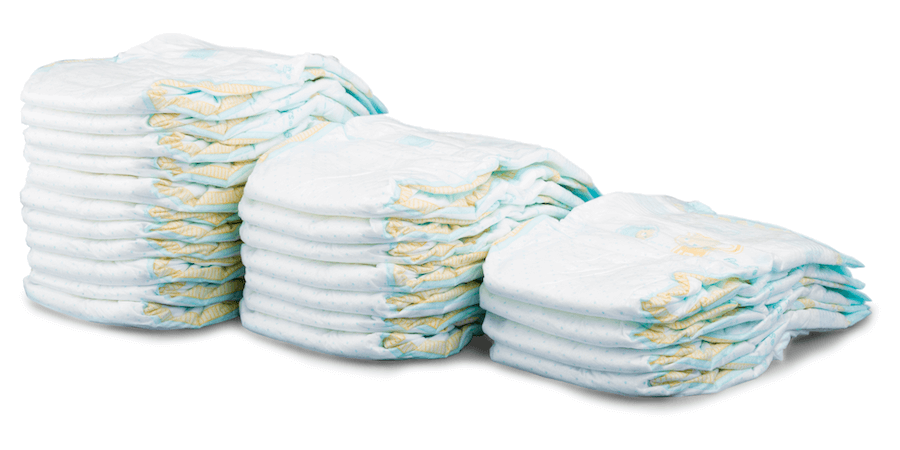
What I Asked Each Manufacturer
I reached out to all of the diaper brands & reviewed their websites below to confirm this list of questions:
- Are you totally chlorine free (TCF)?
- What materials are used in the top-sheet, core, and back-sheet? Do you use bamboo?
- Are you 100% fragrance, dye, and lotion-free? Do you add any herbals (like aloe or essential oils) to your diapers?
- What diaper certifications do you have? Are you OEKO-TEX Standard 100 certified?
- Do you use a wetness indicator and what chemicals are used for that purpose?
- What percent of the diaper is biodegradable, if any?
- Can you share more information about the levels of heavy metals in your diapers, specifically your inks?
There are many, many “non-toxic diaper reviews” online… each with very conflicting opinions on each brand. Keep in mind, this is MY opinion based on my risk tolerance and safety standards. You be the judge for your specific household. For some parents, having a wetness indicator is worth the extra minuscule risk from the wetness indicator chemicals – you can make that decision for yourself.
Don’t be a victim of greenwashing. Some diaper brands will actually dye their diapers a light brown to make them appear more “natural.” They are fooling their customers.
Baby’s skin is significantly more sensitive than adult skin. It’s about 30% thinner. [8, 9]
Best, Better, Worst Non-Toxic Diaper Brands
No ifs, ands, or butts, these are the best non-toxic organic diaper brands on the market! Let’s dive into the different tiers of diapers.
Best Non-Toxic Diaper Brands
Keep in mind, this does NOT include the “political” views of these companies. Some of these companies are very outspoken on political issues, so you can make your best judgment on each brand. This is also not a review on how well the diapers work – this is a review based on the materials used in the products. What works for one parent/baby, may not work for another.
Remember: there is no 100% biodegradable disposable diaper. These “best” diaper options prioritize plant-based materials like cotton, do not use bamboo, are totally chlorine-free, are OEKO-TEX certified, and/or have transparent third-party testing.
These brands are not in a specific order within each category.
For all of these diaper options, it’s best to opt for the plain white versions, if available.
1 – Kudos – The Best!
Discount code INONAROUND saves you 10% on your first purchase!
- Pros:
- Only has cotton coming in contact with baby’s skin (no plastic or bamboo) – this is the ONLY one I can find that uses cotton as a top-sheet instead of other petroleum-derivatives
- Uses USA-sourced cotton
- Certified OEKO-TEX Standard 100 and EWG Verified
- Free of chlorine, latex, lotions, fragrance, phthalates, parabens, and more.
- Uses a mixture of 70% unbleached cotton with 30% chlorine-free bleached cotton
- Cons:
- Contains undisclosed ingredients in their wetness indicator (added to the back sheet which doesn’t touch baby’s skin)
- Potential for glyphosate or pesticide/herbicide exposure from conventional cotton
- Offers diapers with prints (use of inks), although they also offer a plain version
- Updated August 2024 – feedback from a follower: they work great during the day, but they struggled with leaking at night.
2 – Attitude
- Pros:
- Top and back sheet made from cellulose polymer
- Totally chlorine-free
- Free of fragrance, dyes, inks, lotions
- 90% biodegradable diaper
- No wetness indicator
- Cons:
- Some reviews claim that it can leak
- Undisclosed materials in the polymer (“biodegradable corn starch-based biopolymer)
3 – Joonya
- Pros:
- Completed microbiological-chemical testing by Eurofins [10] – very transparent! Test results are directly on their website. This is something not many diaper brands do.
- Totally chlorine-free
- FSC and Dermatest-certified
- Made with over 51% bio-based plastic and is partially compostable
- Free from lotion, fragrance, latex, heavy metals, etc…
- Free of any herbals
- They don’t use a wetness indicator
- Cons:
- Uses some polypropylene
- Uses inks (although they’re heavy metal free)
If you’re really looking for a non-toxic swap, you can try reusable organic cotton cloth diapers. This isn’t for the faint of heart, though! Proper maintenance and disinfection is crucial, so I do not recommend this to start. It also requires a large amount of water to wash.
Best Of The Best: Organic Cloth Diapers
If you’re local to New York City, New Jersey or Austin, TX, Diaperkind can be a great option for those who are grossed out by cleaning cloth diapers. They are a cloth diapering service that will drop off cloth diapers and pick them up to clean. They use a four-stage fragrance-free detergent and heat the water to 160 degrees. You can see what areas they service here.
Check to see if there are other cloth diaper service providers in your area!
Support brands that are fully transparent with the materials they use.
Better Non-Toxic Diaper Brands
These diaper brands use petroleum products (like polypropylene, polyethylene, etc…) in the majority of the diaper, use an aloe/essential oil essence, or are made of bamboo.
Bamboo does not fit the “best” category because it usually has very harsh processing which can release toxic fumes into the air. Some people like bamboo diapers, but for this ranking, they would be in the “better” not “best” category.
1 – Coterie
This is the best in-store option if you’re in a pinch. Check out Whole Foods!
- Pros:
- Totally chlorine-free with FSC-certified pulp
- List most ingredients on their website
- Reviews say that they can be more durable than 100% non-toxic diapers
- Available in stores like Whole Foods
- Free of: fragrance, chlorine, lotions, dyes, heavy metals, latex, VOCs, parabens, PFOAs, glyphosate, etc…
- Their customer service team responded to me very promptly with a long email!
- Cons:
- Using petroleum-derived materials, like polypropylene and polyester for the back sheet and polypropylene for the top sheet
- Has an undisclosed wetness indicator (free from quaternary ammonium compounds, fluorinated compounds and bromocresol green)
- They have a safety report page on their website, but it doesn’t show the original report
2 – Andy Pandy
- Pros:
- They disclose all of their ingredients
- Totally chlorine-free
- OEKO-TEX Stanard 100 certified
- 86.5% biodegradable – one of the most biodegradable options on the market!
- Free of: latex, chlorine, alcohol, phthalates, preservatives, PVC, TBT, PFAS, etc…
- Does not have printed designs with inks
- They disclosed their wetness indicator chemicals (which most companies do not do): stearic acid, polyvinylpyrrolidone, resin
- Cons:
- They are not third-party certified
- Bamboo top and back sheet with 100% viscose
- Uses a wetness indicator pH strip
- Adds an aloe essence (one of the main reasons it’s in “better” and not “best”)
- Some parents say that they can feel wet during use, so may not be the best option at night
3 – Parasol
- Pros:
- FSC-certified materials
- Totally chlorine-free
- OEKO-TEX Standard 100 certified waistband material (spandex)
- Free of latex, fragrance, alcohol, parabens, phthalates, preservatives, and lotions
- Cons:
- Uses inks (although they are water or soy-based and free of heavy metals)
- Includes a wetness indicator
- Mostly polyethylene film
4 – Happy Little Camper
- Pros:
- OEKO-TEX Standard 100 certified
- Wood pulp and cotton blend for top and back sheets
- Heavy-metal free inks
- Totally chlorine-free
- Does not use a wetness indicator
- Free of fragrance, dyes, TBT, VOCs, PET, dioxins, parabens, phthalates, etc…
- Cotton is non-GMO
- Cons:
- Includes organic aloe vera and vitamin E, which can still be an allergen for some babies (main reason they’re “better” and not “best”)
- They don’t disclose the back-sheet material
- Uses some inks (although they are lead and heavy metal free)
5 – Believe
- Pros:
- Free of chlorine, latex, alcohol, lotions, fragrance, phthalates, PVCs, and more.
- Fluff pulp is made from U.S. virgin wood
- No aloe or essence added
- Cons:
- Uses a wetness indicator
- Made in China
- Made from bamboo, which usually doesn’t have an eco-friendly or non-toxic supply chain
7 – The Honest Company
(Update November 2023: Honest Diapers have switched to ECF pulp instead of TCF. [11] They would not fall under our “better” category anymore.)
- Pros:
- Totally chlorine-free pulp
- Free of fragrances, latex, lotions, parabens, etc…
- Wood core is harvested sustainably
- Cons:
- Undisclosed citrus odor inhibitor
- Polypropylene and polyethylene top-sheet. Plant-based plastic and polyethylene back-sheet.
- Inner-layer is now made of polyethylene and polypropylene instead of bio-based PLA (they reformulated)
- While their diapers are “cute” because of the designs, they’re exposing your baby to unnecessary inks (although they offer plain white too)
- Uses a wetness indicator (“the pH sensitive adhesive is safely locked between the back sheet and the core of the diaper and should not migrate toward the babies skin.”)
8 – Nest
- Pros:
- 64% biodegradable
- Fluff and SAP core
- Totally chlorine free
- Free of phthalates, fragrance, parabens, bleach, etc…
- Cons:
- Made from bamboo, which usually doesn’t have an eco-friendly or non-toxic supply chain
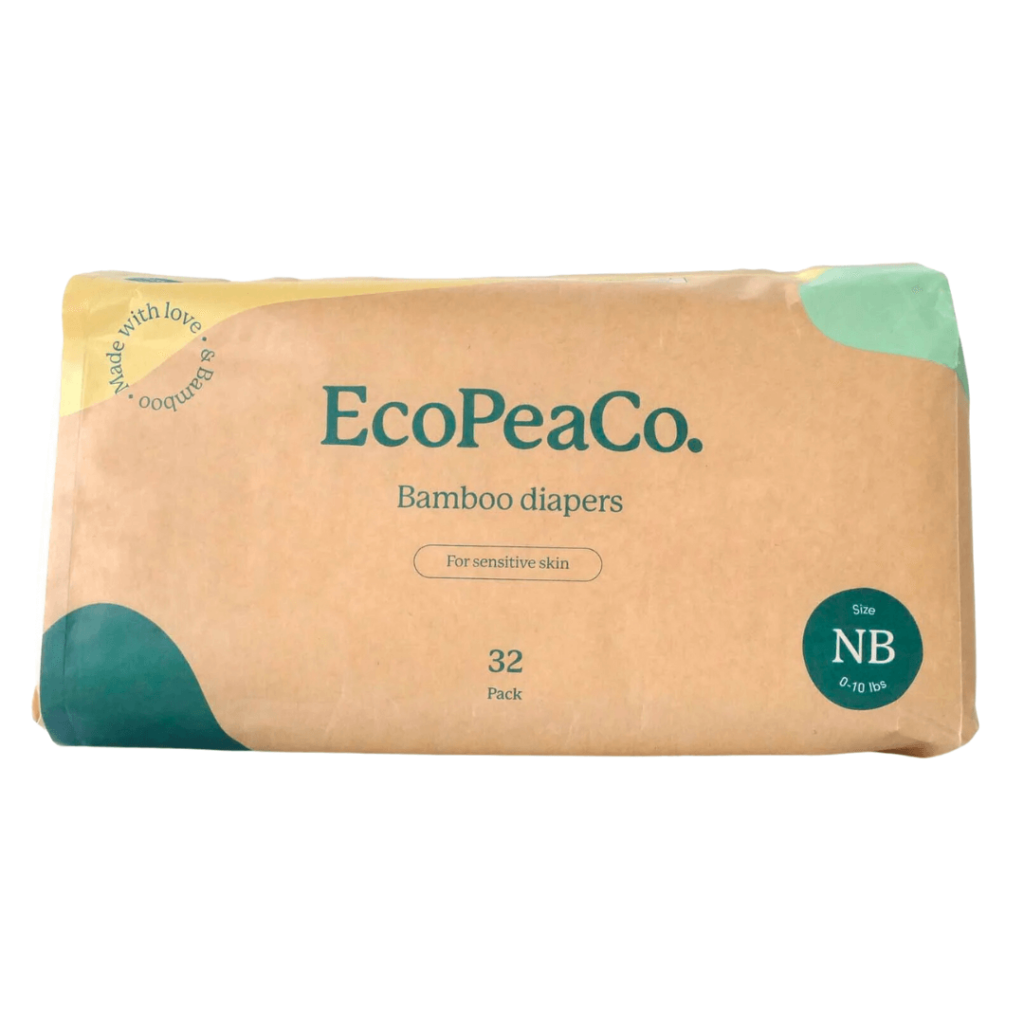
9 – Eco Pea Co. Bamboo Diapers
- Pros:
- Cellulose fluff with SAP core
- OEKO-TEX Standard 100 and FSC-certified
- Absorbent core uses bamboo pulp that’s chlorine-free
- Free of dyes and fragrance
- Their customer service team responded very quickly
- Cons:
- Made from bamboo, which usually doesn’t have an eco-friendly or non-toxic supply chain
- They contain aloe vera – can be an allergen to some babies
- Uses some ink (water based)
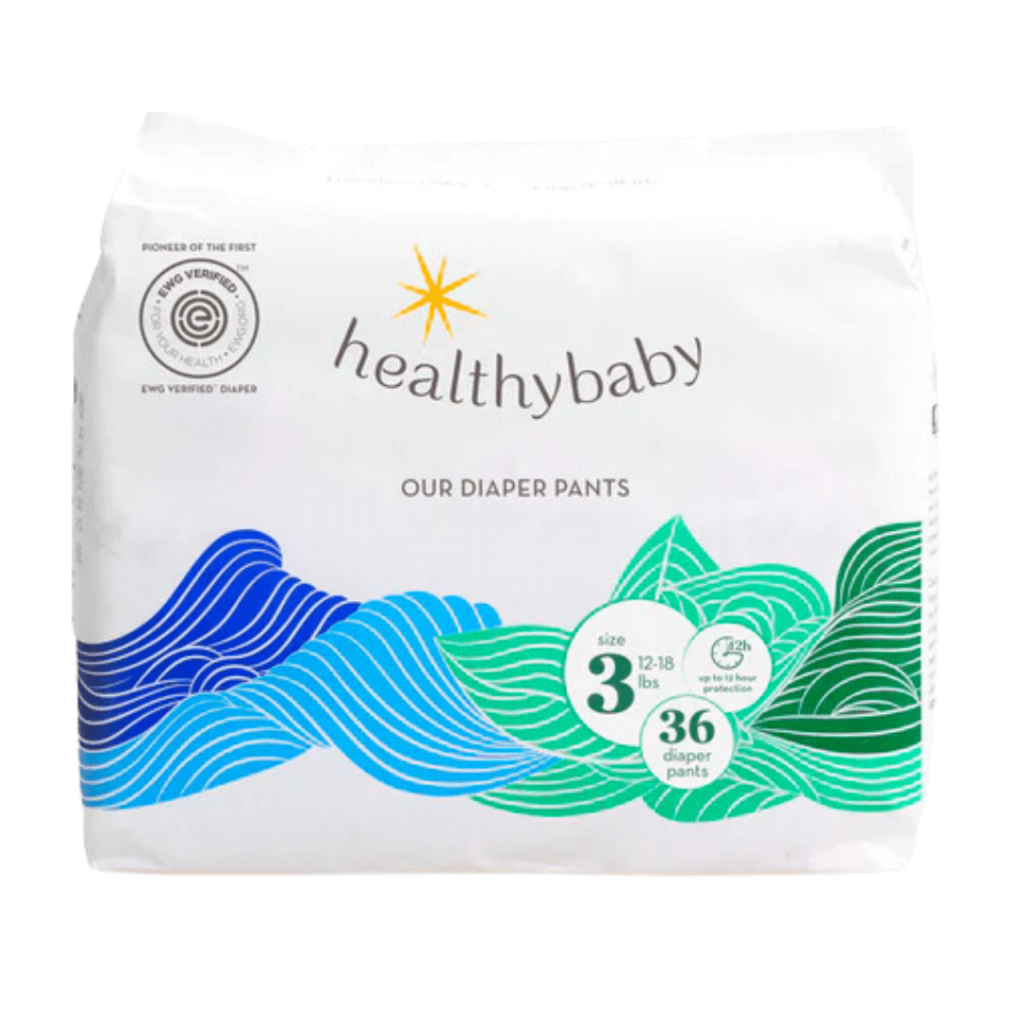
10 – Healthy Baby
- Pros:
- EWG-certified
- SAP and wood-pulp core from 100% sustainably-sourced forests
- Totally chlorine-free
- Cons:
- Very small portion that are made of organic cotton
- Top and bottom sheets contain polyethylene and polypropylene
- Some parents say they leak more easily
- They add inks for their logo
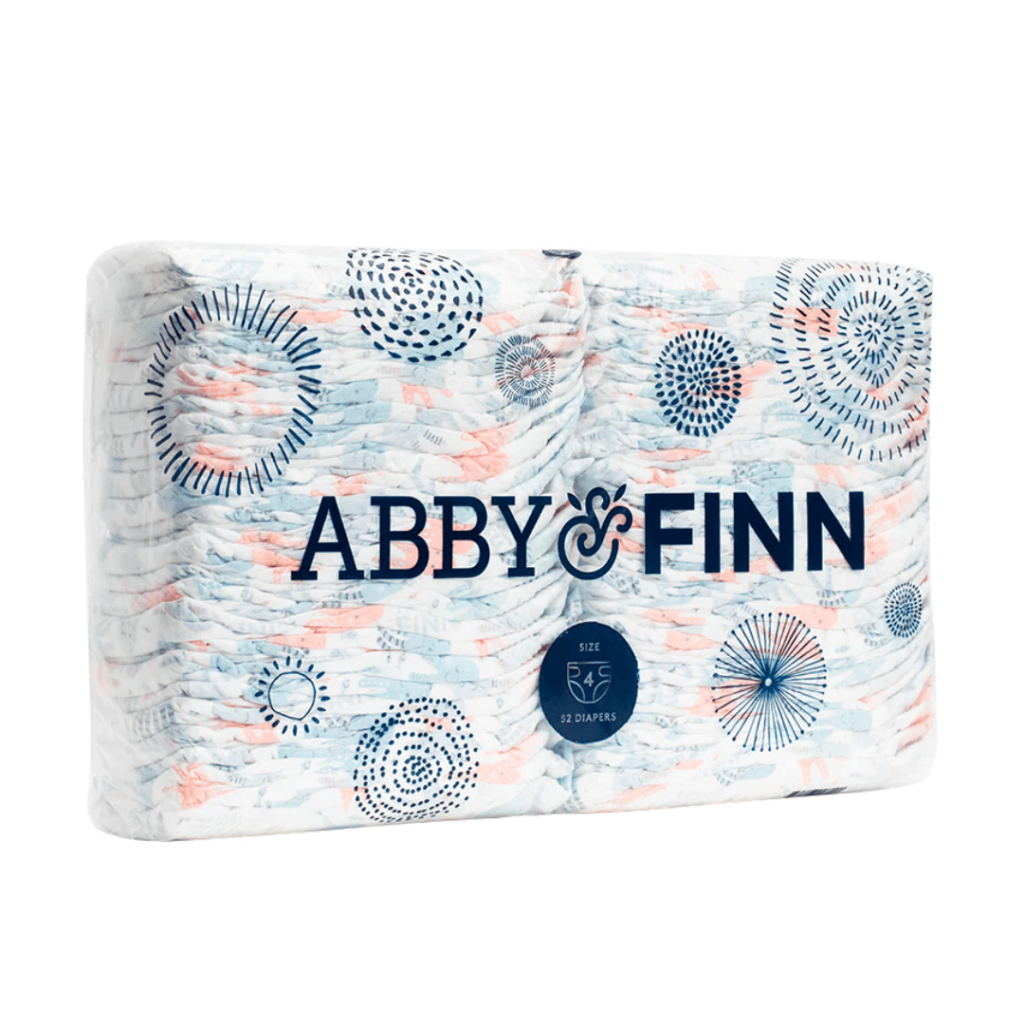
12 – Abby & Finn
[Update March 2024 – their website has been down for quite some time, so we think they may have gone out of business]
- Pros:
- No wetness indicator
- Totally chlorine-free
- Free of fragrance, dyes, lotions, latex, and heavy metals
- Cons:
- Made mostly with petroleum-based materials, like polypropylene for the top and back sheets
- Uses a lot of ink for designs

13 – Rascal & Friends
- Pros:
- Free of lotions, latex, fragrance
- BioChecked Non-Glyphosate certified (first diaper in the world to be certified) and OEKO-TEX Standard 100 certified
- Available at Walmart
- Cons:
- Primarily made from fluff pulp, super absorbent material (SAP), polypropylene non-woven fabrics, polyethylene film
- Uses a wetness indicator (only in size 1 and 2 premium diapers)
- Uses water-based inks for designs
14 – Babyganics
(Worst of the “Better” category)
- Pros:
- Made with totally chlorine-free pulp
- Free of latex, fragrance, petroleum-based lotions, and petroleum-based fragrance
- Cons:
- Uses undisclosed inks
- Includes a wetness indicator
- Uses polypropylene, polyethylene, and other petroleum-based materials
- Include “NeoNourish” which is an undisclosed blend of ingredients and oils, like tomato, cranberry, and raspberry. It’s unnecessary. (This is something to avoid)
- Owned by S.C. Johnson
15 – Thrive Market
(Worst of the “Better” category)
- Pros:
- Totally chlorine free
- No wetness indicator
- Free of latex, parabens, phthalates, and fragrances
- Cons:
- Uses ink for designs (although they’re heavy metal free)
- Includes citrus and liquid chlorophyll as odor blockers – this is completely unnecessary
- Full ingredient list isn’t disclosed
16 – DYPER (ECF)
They can be a more eco-friendly option if you use their composting system.
- Pros:
- Uses Sumitomo SAP for part of its core
- Wood pulp core with 100% bamboo viscose as the outer covering
- OEKO-TEX Standard 100 certified for their bamboo viscose (which is a major plus)
- Certified USDA BioPreferred 55% product
- You can compost via their “REDYPER” program via Terracycle
- Free of fragrance, dyes, lotions, PVC, TBT, phthalates, etc…
- They claim you can compost the diapers at home, as long as it’s free of fecal matter
- They disclose the materials used in each layer of the diaper in a chart
- Cons:
- Not totally chlorine-free. They are elemental chlorine-free (ECF). There can potentially be some level of dioxins in the final product. (ECF is something to avoid. Since they’re OEKO-TEX certified and very environmentally friendly they’re in the “better” and not “worst“ section. This is one of the only brands I make that TCF exception for. When I reached out to the brand, they confirmed that their ECF bleaching process is free of dioxins.)
- Uses an undisclosed wetness indicator
Worst Non-Toxic Diaper Brands
Any diapers with fragrance, lotions, alcohol, or chlorine would fall into the “worst” category. If the product is ECF, not TCF, it would not meet our quality standards – the diaper should be 100% chlorine-free. Most conventional diaper brands would fall into this category, including:
- Huggies (including Huggies Special)
- Kirkland
- Whole Foods 365 (they are not TCF)
- Luvs
- Mama Bear
- Up & Up
- Pampers (including Pampers Pure; owned by P&G and has undisclosed materials)
- Parent’s Choice
- Seventh Generation (owned by Unilever – engaged in greenwashing)
- Cuties
- Made Of (they are not TCF)
and more. Before supporting a brand, do your due diligence to check what materials they use.
Unfortunately, Hello Bello and Millie Moon used to use TCF pulp, but now are ECF, so they would fall under the “worst” category.
While they’re certainly made with “better” ingredients, the following don’t meet my standards since they are elemental chlorine-free (ECF), instead of totally chlorine-free (TCF). I would still choose these over the above list if in a pinch, especially if they are OEKO-TEX certified:
- Hello Bello
- Earth & Eden
- Eco By Naty
- Eco Boom
- EcoOriginals
Looking for diaper cream, formula, and other non-toxic baby products?
Final Thoughts – Non-Toxic Organic Diaper Brands
No diaper is 100% perfect – it’s important for you to weigh the pros and cons of each option. If you’re deciding between baby diaper brands, ask the brand a TON of questions and due your due diligence. You want to best materials for your baby’s delicate skin.
If you haven’t been using a “non-toxic” brand – don’t stress about it! While reducing exposure to unnecessary chemicals is important, it’s not the end-all-be-all. None of this is meant to make you feel guilty. You can only make informed decisions if you’re aware of the issues.
Share this article with your favorite mommy or daddy-to-be!
⬇ Pin this “Non-Toxic Organic Diaper Brands?” pic on Pinterest for future reference! ⬇
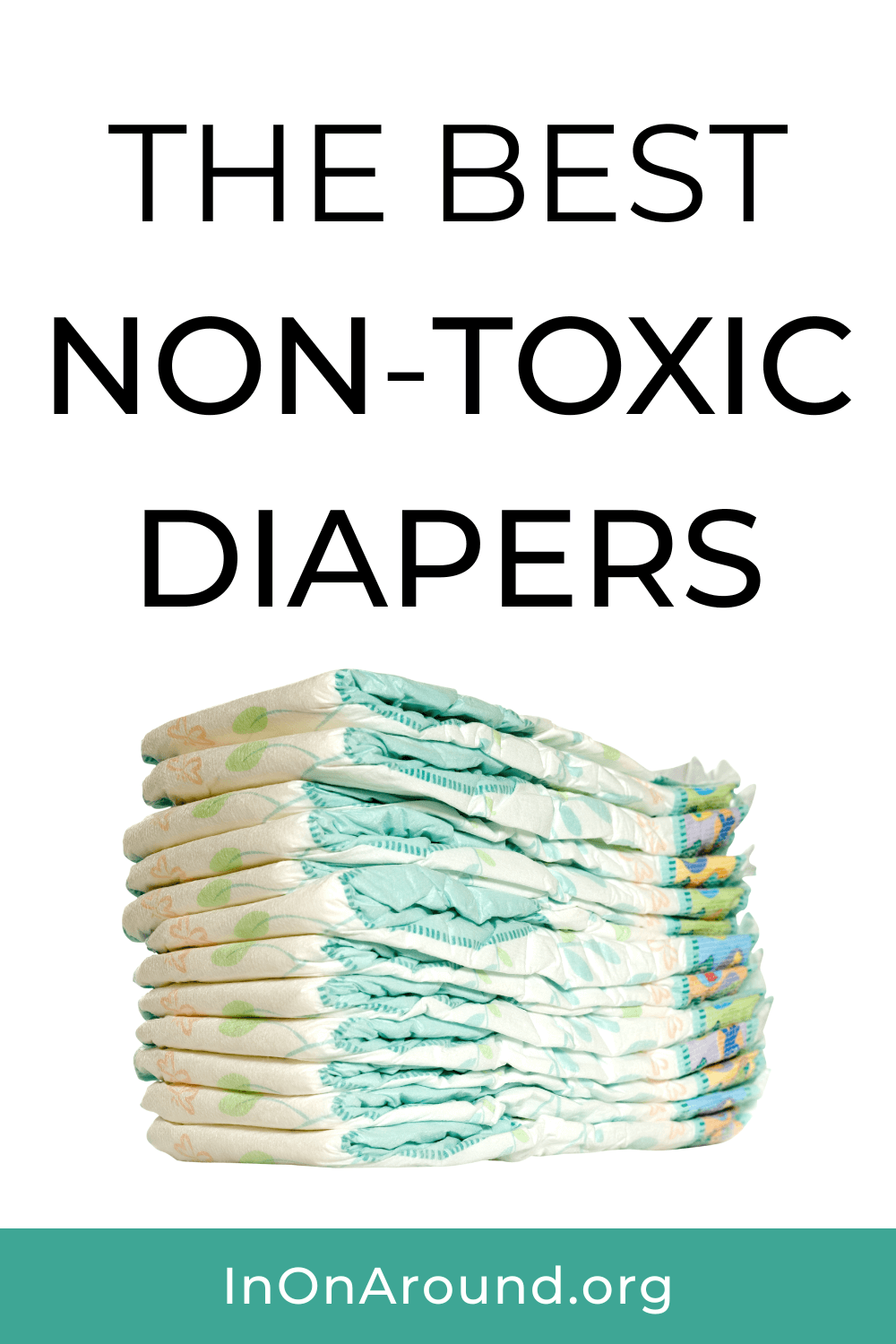
Frequently Asked Questions – Non-Toxic Organic Diaper Brands
Click on the below FAQs to learn more about non-irritating diapers, hypoallergenic diapers, and chemical-free, sustainable, environmentally conscious nappys.
Are Non-Toxic Organic Diaper Brands More Expensive?
Can Non-Toxic Organic Diapers Prevent Diaper Rash?
How Often Should Diapers Be Changed?
What are your favorite diaper brands?
Let me know your thoughts and key takeaways in the comments below!
You can watch our web story here.
xoxo,

Want to read more? Check out my other articles here!
Other references on non-toxic organic diaper brands: I Read Labels For You, Natural Minded Momma, Yvonne Burkart, Gimme The Good Stuff, Girl Gone Green, Mamavation, Parent Giving, Mom Loves Best, All Natural Mothering, Wholesome Children, Baby Cozy, Baby Gear Lab, Diaper Answers, Parents, Every Mum
Copyright In On Around LLC 2023 ©. The statements made on this website have not been evaluated by the FDA (U.S. Food & Drug Administration). They are not intended to diagnose, treat, cure, or prevent any disease. The information provided by this website should not be used as individual medical advice and you should always consult your doctor for individual recommendations and treatment. The information contained in this site is provided on an “as is” basis. Related to this site, there are no guarantees of completeness, accuracy, usefulness, or timeliness. In On Around LLC assumes no responsibility or liability for any errors or omissions in the content of this site.


